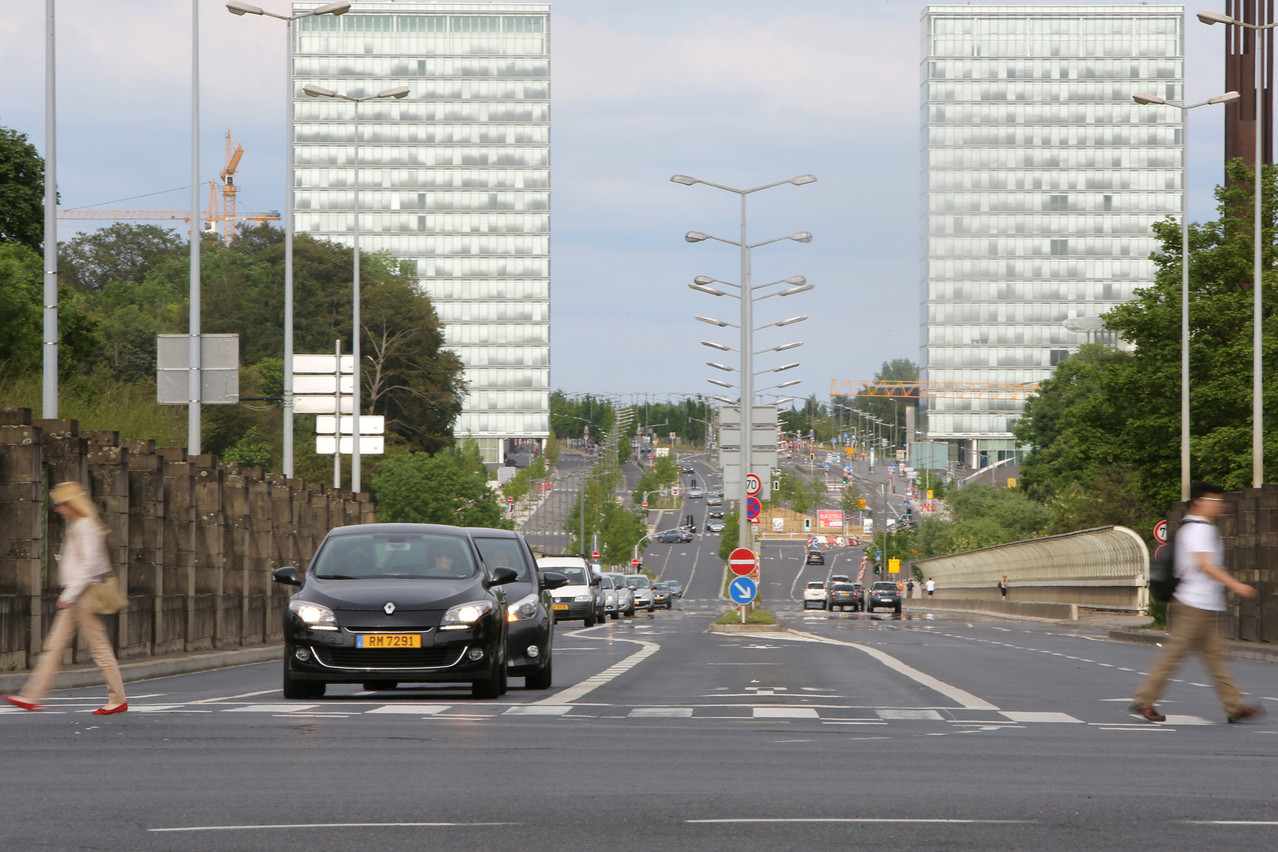A hefty proposal of 200 pages, the PNM 2035--also called the Modu 3.0--addresses all types of mobility needs and offers solutions to many of them. The focus is set on making smaller and bigger changes that have a strong and positive impact not only on automobility and alternative transportation modes, but also on urban and rural residents alike.
Anticipating the country’s growing pains
Luxembourg’s statistics bureau served as a basis for the mobility plan. Running scenarios on Luxembourg’s GDP until 2035--and expecting a growth between 1.5% and 4.5%--the institution expects mobility needs overall to grow by 40% over the next 12 years. This also includes the the grand duchy will continue to witness.
But the government shouldn’t be running after problems and fixing them one construction site at a time, said Bausch during the press conference. Instead, measures should be taken to be able to answer the increase in demand, while providing residents of the country with a healthier environment.
While the mobility plan says it is not against cars, Bausch said that currently, 54% of car trips in the country are less than 5km long. This should change, he said. “We have to work in a way that makes the alternatives so good that people want to use them,” he said, citing in passing his passion project--Luxembourg’s tram line--which has amassed a large amount of success.
But in his plans, the minister distinguishes the three agglomerations of the country--Luxembourg City, the Nordstad and Esch-Belval--from rural parts of the country, which require completely different needs.
It is important, however, to undertake the changes proposed in the plan now, rather than a few years down the line, or the mobility problem will have a negative impact on society, economy and quality of life in Luxembourg.
Many plans…
The PNM 2035 focuses on all kinds of mobility: cars, buses, trains, trams, bicylces and pedestrians. By 2035, individual vehicule usage should go down to 31% (from 51% currently), passenger transportation up from 19% to 22%, while public transportation should increase to 22%, walking to 14% and most importantly, cycling to 11%.
The key to achieving this is to introduce intermodal transportation, Bausch said, meaning that a passenger might hop from mode of transport to another to complete one trip, if needed. And where the Modu 2.0. was a theoretical framework, Modu 3.0. provides a concrete strategy on achieving this.
The plan collects many projects. Four new projects have been announced for the train network alone. A more direct line will connect passengers between Differdange and Luxembourg and save them 15 to 20 minutes. The Hollerich gare will be moved to the rue d’Esch, and accommodate a planned tram stop, effectively becoming a turntable between transportation means. Other plans with the CFL include strengthening the Nordstad line.
Read also
The tram network in Luxembourg will also see extensions, with connections between existing poles and with the airport, the Cloche d’Or and the park and ride Bouillon being added to the map. For buses, a restructuring of timetables is already nearly completed, with the final steps set to take place in the summer of 2022. Buses will also be able to use new high service corridors, allowing them to travel faster and not be stuck in traffic jams.
Bicycles should become the second most important means of individual mobility, and for this goal, Bausch offers to create a high quality networks solely for bikes, so as to avoid impacting cyclists, motorists and pedestrians alike. Pedestrians should also benefit from changed structures, such as more crossings in streets.
The aim is to entice users to use different transport modes in urban spaces rather than cars, according to the transports minister, and to move from a car-centric life to a people-centric world.
…for a transmodal and quality mobility
Cars, however, are not to be banned--they are essential to mobility, especially in rural areas--but should be used more flexibly within the new transmodal mobility network. Future infrastructures should also be built in proximity of public transportations, says Bausch, so as to give all a chance to access them.
Lastly, a branch of the PNM strives to lighten car traffic in urban cores, by creating bypasses such as the one planned in Hesperange. The aim is to create a more breathable living space for locals, while allowing drivers to travel from one point to another without having to drive through town and potentially sit in traffic jams.
And while it is an extremely ambitious task, Bausch concedes, “we must have the courage” to undertake the changes. Bausch himself will not be there to see the projects completed, as he announced he would not be running to extend his ministerial position. Instead, it will be “for the next minister to complete (the projects) and cut the ribbon.”
Now that the plan has been revealed, the individual projects will either be added to the state budget--if they cost less than €40m--or will have to be passed by parliament in the shape of financing laws, if they cost more than €40m.
